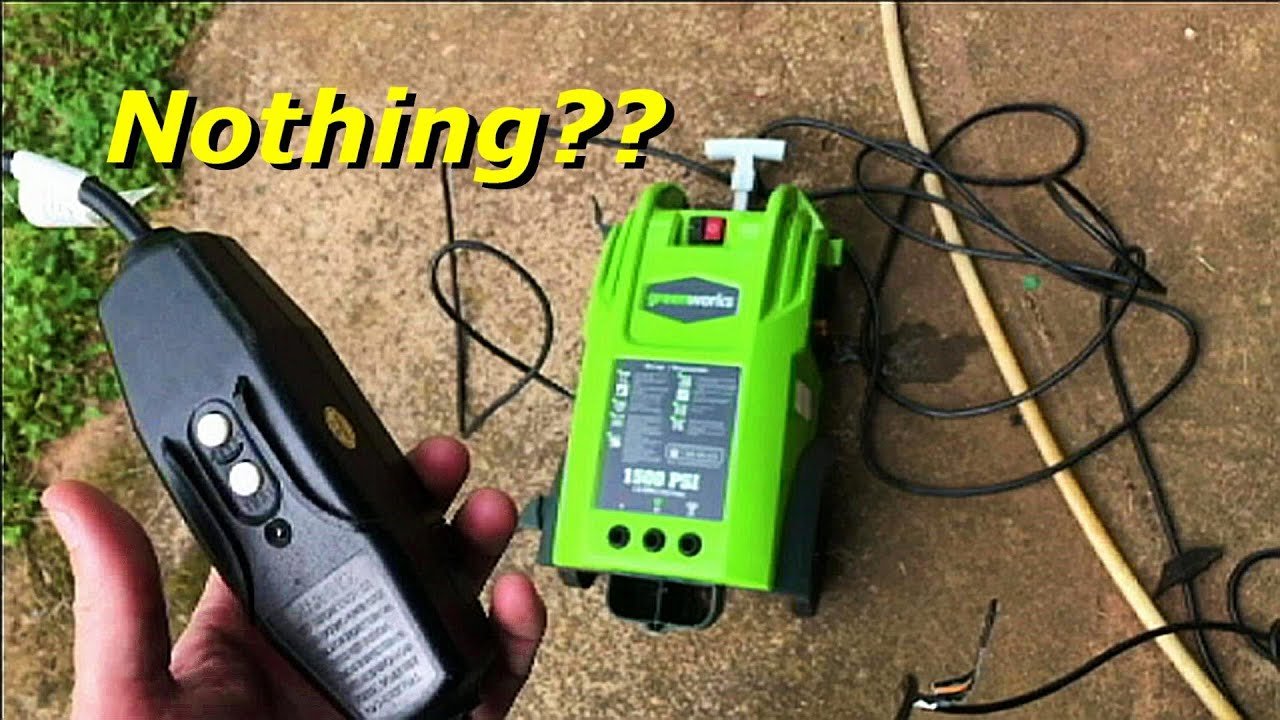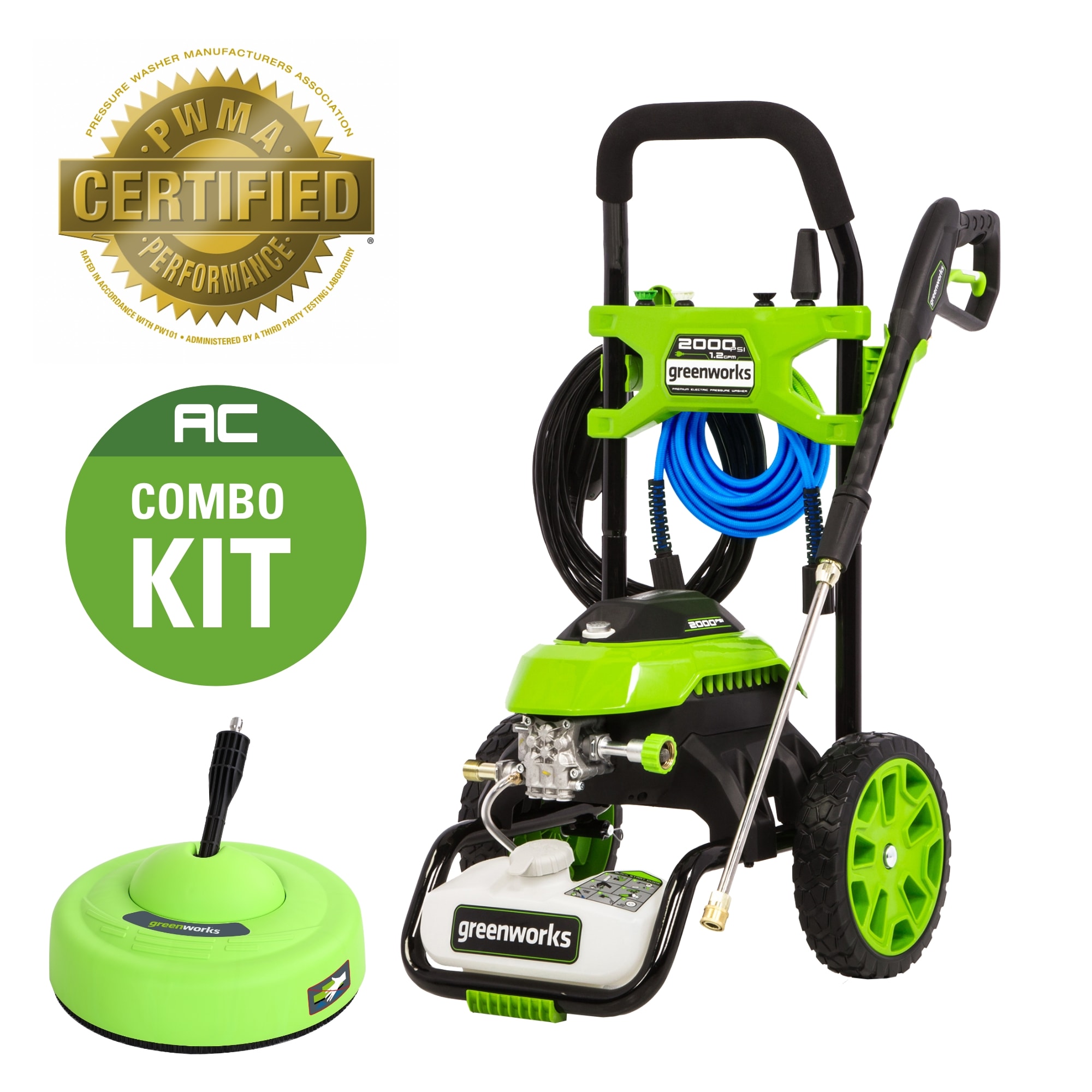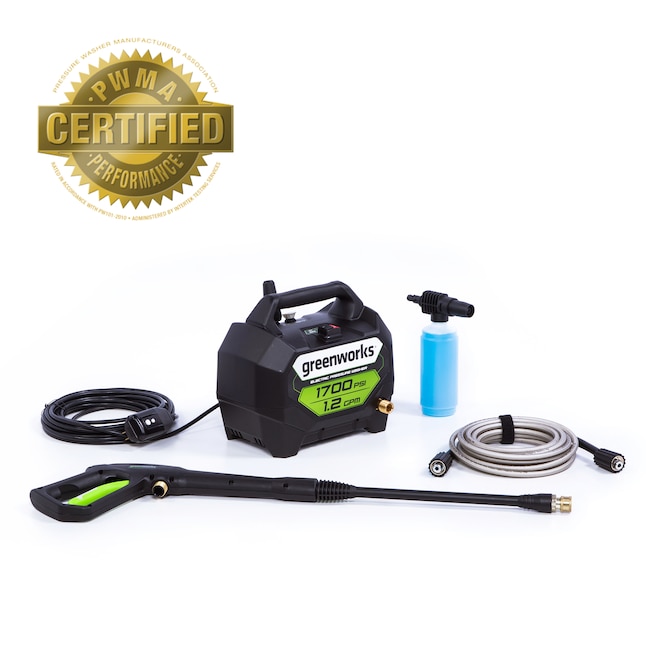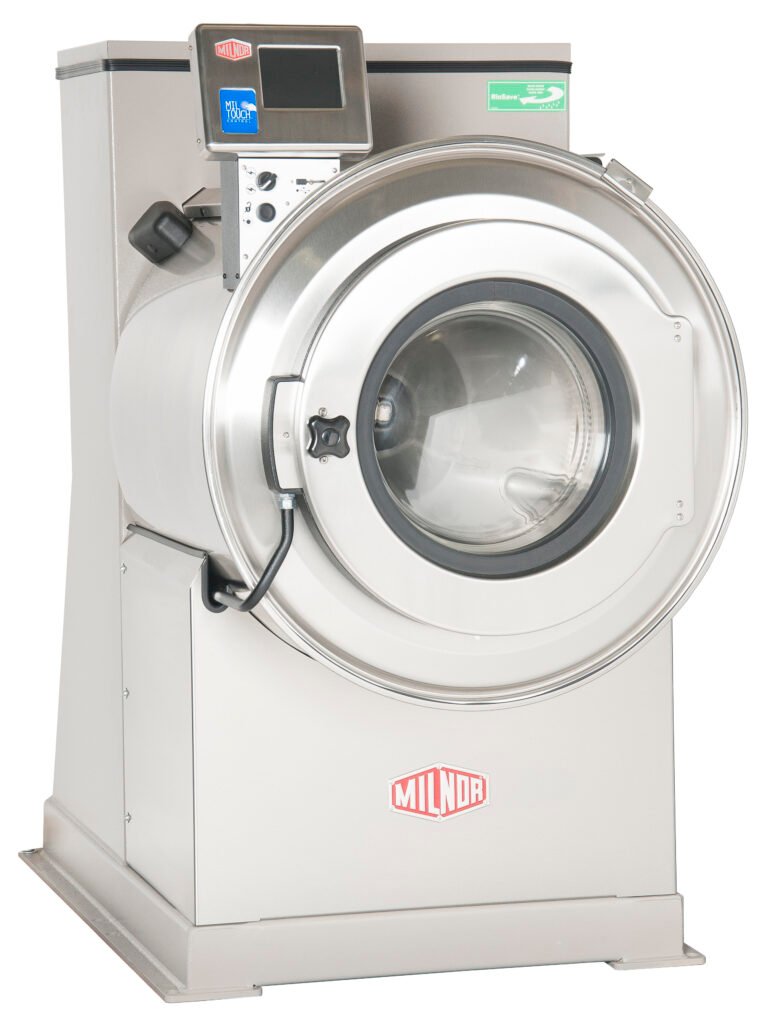
To troubleshoot a Greenworks pressure washer, check the power source and connections and inspect the hose and nozzle for clogs or damage. In addition, ensure the water supply is adequate and the detergent is properly diluted.
Regular maintenance and following the manufacturer’s guidelines can help prevent common issues and extend the lifespan of your pressure washer. A Greenworks pressure washer is a handy tool for cleaning various surfaces, from driveways to patios. However, like any machinery, it may encounter problems that impede its performance.
To keep your pressure washer running smoothly and efficiently, it is essential to understand how to troubleshoot common issues that may arise. This article will provide you with practical tips and steps to diagnose and resolve problems with your Greenworks pressure washer, ensuring that you can get back to tackling those tough cleaning tasks with ease. By following these troubleshooting techniques, you can save time, money, and frustration by resolving issues on your own.
Introduction To Greenworks Pressure Washer
The Introduction to Greenworks Pressure Washer guide offers troubleshooting tips for resolving common issues with this powerful cleaning equipment. Discover solutions for problems such as low pressure, leaks, and electrical malfunctions, ensuring optimal performance.
Greenworks pressure washers are powerful cleaning tools that efficiently remove dirt, grime, and stains from various surfaces. Whether you need to clean your sidewalks, patios, vehicles, or other outdoor areas, a Greenworks pressure washer can be your go-to solution. These electric-powered machines provide excellent cleaning performance while being eco-friendly due to their lower noise levels and emissions compared to gas-powered alternatives. In this article, we will delve into an overview of Greenworks pressure washers, common issues that users may encounter, and the corresponding troubleshooting solutions.Overview Of Greenworks Pressure Washer
Greenworks pressure washers are designed with convenience and performance in mind. With their lightweight and compact design, these machines offer ease of use and portability. The pressure washers come in various models with different pressure ratings, ranging from 1500 PSI to 2300 PSI, allowing you to choose the ideal one for your specific cleaning tasks. The higher the PSI rating, the more powerful the pressure washer will be in tackling tough stains and grime. One of the standout features of Greenworks pressure washers is their versatility. These machines come with multiple attachments and nozzles, such as a turbo nozzle for concentrated cleaning power and a soap applicator nozzle for deep cleaning. The adjustable pressure settings provide further control, allowing you to adjust the pressure based on the surface you are cleaning. Additionally, the built-in soap applicator makes it easy to apply detergent for thorough cleaning.Common Issues And Solutions
Despite their reliable performance, users may occasionally encounter issues with their Greenworks pressure washers. Here are some common problems and the corresponding troubleshooting solutions to help you resolve them quickly: 1. Low Pressure: If you notice a decrease in water pressure or a weak stream, ensure that the water source is fully open and check if there are any kinks or leaks in the hose. Additionally, inspect the nozzle for clogs or debris that may restrict the water flow. Clean or replace the nozzle as necessary. 2. Leaks: If you observe water leaking from the connections or components of your pressure washer, check for loose fittings and ensure they are tightened securely. If the issue persists, inspect the seals and O-rings for any damage or wear. Replace them if needed. 3. Motor not starting: If the motor fails to start, check if the power cord is securely connected to a functioning power outlet. Ensure that the GFCI (ground fault circuit interrupter) is not tripped by pressing the reset button. If the motor still does not start, consult the user manual for specific troubleshooting steps. 4. Unusual noises or vibrations: If your pressure washer produces unusual noises or excessive vibrations during operation, check if the water inlet filter is clogged. Clean or replace the filter as required. Additionally, inspect the machine for loose parts or components and tighten them appropriately. If the issue persists, contact Greenworks customer support for further assistance. By familiarizing yourself with these common issues and their solutions, you can optimize the performance of your Greenworks pressure washer and enjoy hassle-free cleaning sessions. Remember to always refer to the user manual provided by the manufacturer for specific troubleshooting steps tailored to your model.
Credit: www.lowes.com
Troubleshooting Greenworks Pressure Washer
Having trouble with your Greenworks pressure washer? We’ve got you covered! Our troubleshooting guide provides easy solutions to help you get your pressure washer up and running in no time.
Having trouble with your Greenworks pressure washer? Don’t worry, we’ve got you covered. In this article, we will guide you through troubleshooting common issues that might arise with your Greenworks pressure washer. Whether it’s pressure-related problems, water flow issues, or electrical and motor problems, we’ll provide you with easy solutions to get your pressure washer back up and running smoothly.
Pressure-related Problems
If you’re experiencing pressure-related problems with your Greenworks pressure washer, it could be due to several reasons. Let’s take a look at some potential issues and how to troubleshoot them:
Inconsistent Pressure
If your pressure washer is experiencing inconsistent pressure, the first thing you can check is the nozzle. Ensure that it is clean and not clogged. Sometimes, debris or dirt can accumulate in the nozzle, affecting the pressure. Additionally, check the hose for any kinks or blockages that may hinder the water flow. Lastly, make sure the water supply is sufficient and that the pressure washer is receiving an adequate amount of water.
Low Pressure
If your pressure washer is not producing enough pressure, there are a few steps you can follow to troubleshoot the issue. First, check the water supply and ensure that the water inlet is not clogged. Next, inspect the high-pressure hose for any leaks or damages that may be causing pressure loss. If the hose appears to be in good condition, examine the spray wand and nozzle for any blockages. Sometimes, a clogged nozzle can lead to low pressure.
Water Flow Issues
Water flow issues can impact the performance of your Greenworks pressure washer. Here are some troubleshooting steps to resolve common water flow problems:
No Water Flow
If your pressure washer is not producing any water flow, there are a few things you can check. First, verify that the water supply is connected properly and the faucet is turned on. Ensure that the inlet hose is not kinked or blocked. Check the inlet screen for any debris that may be obstructing the water flow. If none of these steps help, it’s possible that there is an issue with the water pump or the pressure washer’s internal components, and it may require professional assistance.
Intermittent Water Flow
If you are experiencing intermittent water flow, start by inspecting the hose for any leaks or damages. Make sure all connections are secure and there are no air leaks. If the hose seems fine, check the trigger gun for any blockages or dirt that may impede the water flow. Additionally, examine the water filter and clean or replace it if necessary.
Electrical And Motor Problems
Electrical and motor problems can cause your Greenworks pressure washer to malfunction. Here’s how you can troubleshoot these issues:
Power Failure
If your pressure washer is not turning on or experiencing power failure, check the power cord for any visible damages or loose connections. Ensure that the GFCI (Ground Fault Circuit Interrupter) is properly reset or try plugging the pressure washer into a different outlet. If these steps don’t solve the problem, it’s advised to consult a professional electrician.
Motor Overheating
In the event that your pressure washer’s motor overheats, it’s important to address the issue promptly to avoid damage. One common cause of motor overheating is excessive usage without allowing the motor to cool down. If you notice the motor is overheating, turn off the pressure washer and let it cool down for at least 15 minutes. Inspect the air vents and ensure they are not blocked or clogged. After the motor has cooled down, resume your cleaning tasks.
By following these troubleshooting steps, you can easily resolve common issues that may arise with your Greenworks pressure washer. Remember, regular maintenance and proper usage will help keep your pressure washer running smoothly for years to come.
Maintenance And Care For Greenworks Pressure Washer
Proper maintenance and care are key to keeping your Greenworks pressure washer running smoothly and ensuring its longevity. By following a few simple steps, you can minimize the risk of breakdowns and maximize the performance of your equipment. In this section, we’ll discuss the essential maintenance and care tips that will help you get the most out of your Greenworks pressure washer.
Cleaning And Storage
Effective cleaning and proper storage are crucial for maintaining the performance and extending the lifespan of your Greenworks pressure washer. Here are some key points to keep in mind:
- Cleaning the Pressure Washer: After each use, make sure to clean the pressure washer thoroughly. Start by disconnecting the machine from the power source. Use a damp cloth or sponge to wipe off any dirt or debris from the exterior. For stubborn stains, you may need to use a mild detergent. Avoid using abrasive cleaners that can damage the paint or plastic components of the pressure washer.
- Cleaning the Spray Wand and Nozzles: The spray wand and nozzles can get clogged with dirt or debris, affecting the pressure and performance of your pressure washer. To clean them, remove the nozzle and rinse it with clean water. Use a small, soft brush to remove any debris from the nozzle hole. Similarly, clean the spray wand by running clean water through it to flush out any blockages.
- Proper Storage: When storing your pressure washer, make sure to remove all water from the unit by running clean water through it. This prevents any leftover water from freezing and causing damage during colder months. Store your pressure washer in a dry and secure area, away from extreme temperatures and direct sunlight.
- Protective Cover: Consider using a protective cover to safeguard your pressure washer from dust, moisture, and other elements when not in use. A cover can help prolong its lifespan and prevent unnecessary wear and tear.
Regular Maintenance
Regular maintenance is crucial for keeping your Greenworks pressure washer in optimal condition. These maintenance tasks should be performed periodically:
- Oil Check: Regularly check the oil level in the engine of your pressure washer. Refer to the manufacturer’s instructions for the correct oil type and ensure it is at the recommended level. Replace the oil if necessary.
- Air Filter Cleaning: The air filter prevents dirt and debris from entering the engine and affecting its performance. Clean the air filter regularly or as recommended by the manufacturer to ensure it is free from deposits and clogs.
- Spark Plug Inspection: The spark plug is essential for igniting the fuel in the engine. Inspect the spark plug periodically and clean or replace it if necessary. Refer to the manufacturer’s instructions for the correct spark plug maintenance.
- Hose Inspection: Examine the pressure washer hose for any signs of damage or leaks. Replace any worn-out or damaged hoses to prevent accidents and maintain optimal pressure.
Preventive Measures
Following preventive measures can help you avoid potential issues and ensure the long-term performance of your Greenworks pressure washer:
- Read the User Manual: Familiarize yourself with the user manual provided by Greenworks. It contains vital information on operating, maintaining, and troubleshooting your pressure washer.
- Use the Right Detergent: Always use the recommended detergent for your pressure washer. Using the wrong detergent can damage the pump or other components of the machine.
- Proper Water Source: Ensure a clean water source for your pressure washer. Avoid using water that contains sand, dirt, or other particles, as they can cause clogs and damage the pump.
- Pressure Adjustment: Adjust the pressure settings according to the task at hand. Using excessive pressure on delicate surfaces can cause damage, while insufficient pressure may not yield the desired cleaning results.

Credit: www.lowes.com

Credit: www.youtube.com
Frequently Asked Questions On Troubleshooting Greenworks Pressure Washer
How Do I Fix My Greenworks Pressure Washer That Won’t Start?
If your Greenworks pressure washer won’t start, first check the fuel supply, spark plug, and ignition system. Ensure the choke is properly positioned and check for any clogged or damaged parts. Clean or replace as needed, and verify that the fuel valve is open.
If the issue persists, consult the user manual or contact Greenworks customer support for further assistance.
Why Is My Greenworks Pressure Washer Not Building Pressure?
If your Greenworks pressure washer is not building pressure, check the water supply and make sure the hoses and fittings are properly connected and not kinked. Also, inspect the nozzle for any clogs or obstructions. If these are not the issue, check the pump for any damage or wear.
If needed, consider cleaning or replacing the nozzle or contacting Greenworks customer support for further assistance.
How Often Should I Change The Oil In My Greenworks Pressure Washer?
To maintain optimal performance, it is recommended to change the oil in your Greenworks pressure washer at least once per season or after every 50 hours of use, whichever comes first. Follow the instructions in your user manual for specific oil type and replacement procedure.
Regular oil changes help prolong the lifespan of the pressure washer and ensure smooth operation.
Can I Use Bleach In My Greenworks Pressure Washer?
It is generally not recommended to use bleach in your Greenworks pressure washer, as it can damage the pump and other components. Instead, use a detergent specifically designed for pressure washers. These detergents are safe and effective for removing dirt, grime, and stains without causing harm to your pressure washer or the surface being cleaned.
Conclusion
To troubleshoot your Greenworks pressure washer effectively, follow the practical tips and techniques discussed in this blog post. By addressing common issues like low pressure, leaks, and clogs, you can ensure optimal performance and extend the lifespan of your pressure washer.
Remember to perform regular maintenance to keep your equipment in excellent condition. With these troubleshooting guidelines, you’ll be able to make the most out of your Greenworks pressure washer and tackle any problems that arise.






